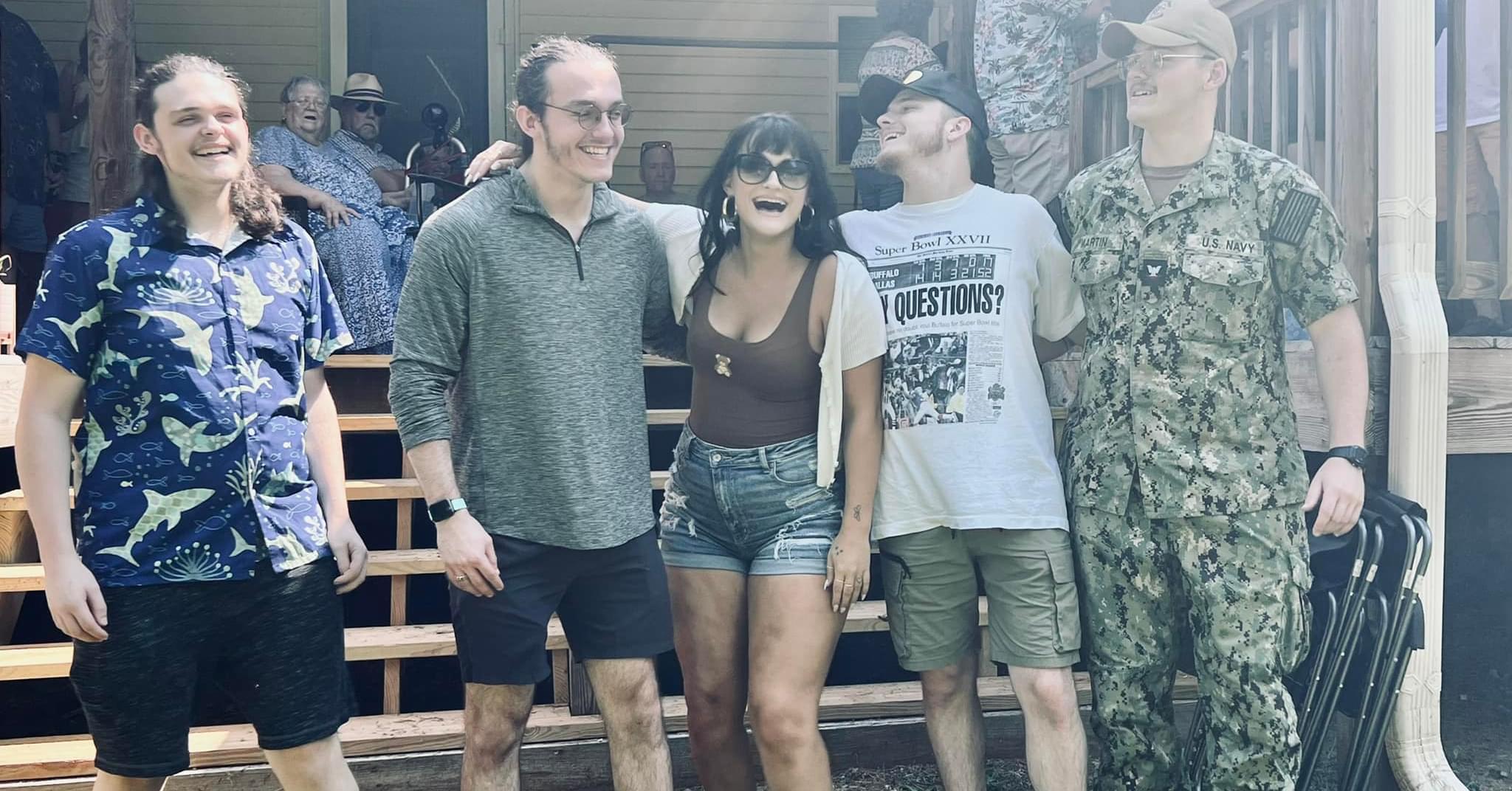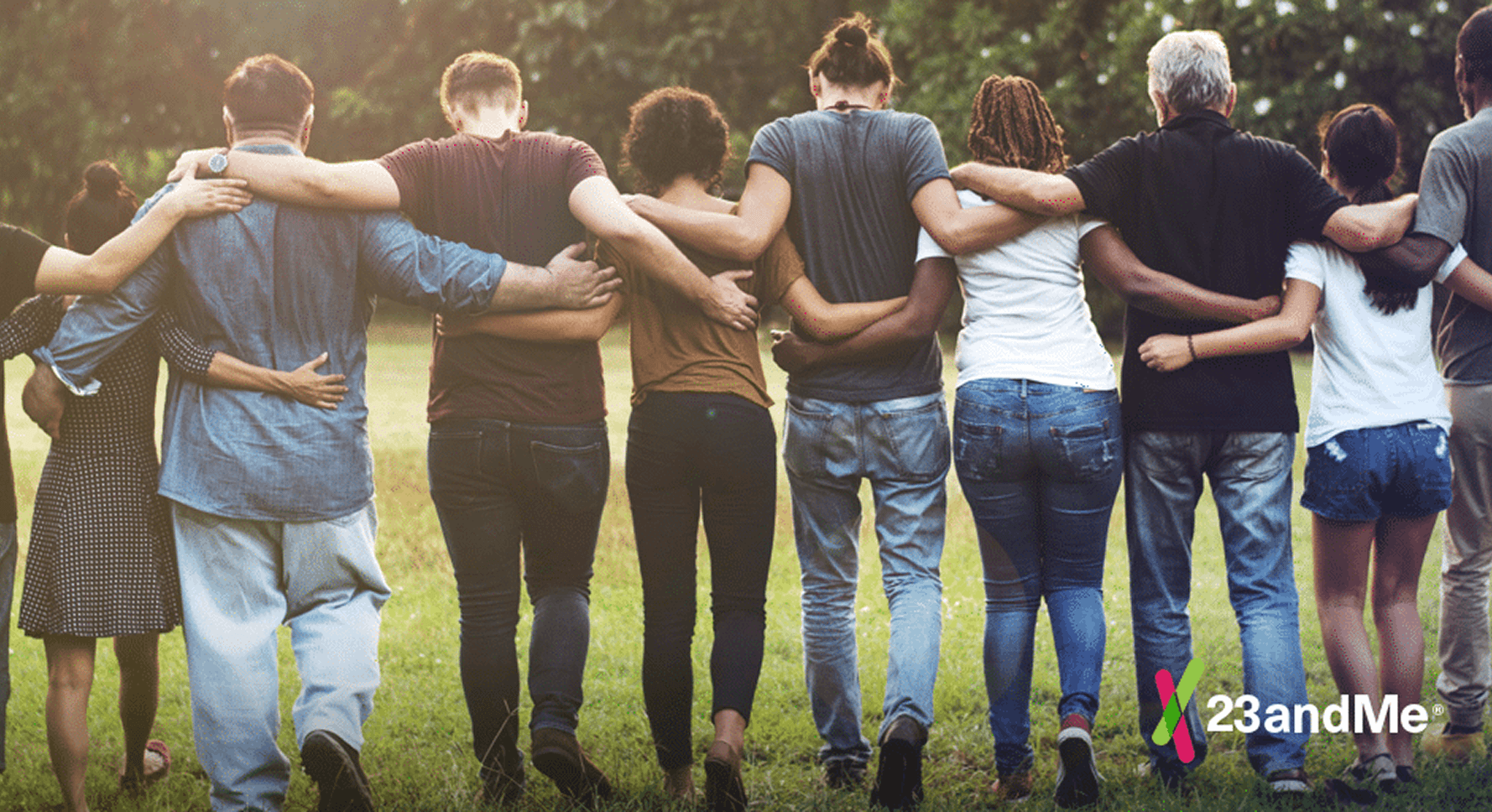Miracles happen; ask Brooke and Chris Martin, who’ve experienced more than one.
The first came almost 24 years ago, when the couple, with the help of in vitro fertilization (IVF), were able to conceive after years of trying unsuccessfully. In October 2000, the couple welcomed healthy twin boys — Matthew and Christopher — into the world.
Donation and then a Prayer
Knowing from their own experience how emotionally difficult infertility could be, Brooke and Chris donated embryos back to the fertility clinic instead of having the clinic discard them or donate them for scientific research. Brooke and Chris hoped the donation could help a couple who, like them, wanted children but couldn’t naturally have one.

“I thought it would be so awesome to help a couple who couldn’t conceive and to be able to give them the gift of a child,” Brooke said.
But this was a “blind” donation, meaning they wouldn’t learn anything about whether another couple used their embryos. They didn’t know anything about what happened to the embryos.
“I had always prayed that (the embryos) could help someone else,” Brooke said. “I’d hoped they’d end up in a loving home… but for 20 years, I’d wondered what happened to them.”
A DNA Connection
In 2021, another miracle, Brooke and Chris learned what happened to three of those embryos.
Those three embryos they donated back to the fertility clinic gave another couple, Trey and Becky Monroe, the chance to be parents to triplets — Lauren, Thomas, and Peter.
That was a miracle for Trey and Becky. She wanted nothing more than to be a mom, Trey said. The children were a triple blessing. They also wondered a little about who had donated them.
When he and Becky asked their fertility doctor about the donor, the doctor “sort of chuckled,” Trey said, “(The doctor said) ‘they’re a lot like you two.'”
The couples were a lot alike. Along with sharing roots in Tennessee, Trey and Brooke work in mental health. They all have a solid Christian faith and a deep family connection. Then, there are the similarities between their children. You would expect some since they are biological siblings, so they look alike. But when Brooke first saw a photo of Thomas, it still made her gasp at how much she looked like her sons.
“There was no doubt that’s our kid,” Brooke said.
Harmony
But it wasn’t just how similar they all looked; there were also odd things like how Matt and Thomas walked with the same athletic swagger, and then there was Lauren and Chris’s interest in music and singing.
A video of Lauren and Chris harmonizing as they sang a pitch-perfect rendition of the song “Speechless.”
“We sound the same,” Lauren said. “It’s crazy.”
The clip of the two singing encapsulates both literally and figuratively how these strangers, who are also biological siblings, immediately fell into sync and harmonized as a family.
The story’s tragedy is that Becky didn’t live to see it. She died about a year before the two families made this connection.
However, the story of how they all found each other with the help of 23andMe has received regional and national media attention. For Brooke, it’s a story about faith and family, nature and nurture, and the good that comes from allowing another family to have a child. It’s also expanding how she thinks of family, she said.
These two families might not have joined had Trey and Becky’s son Thomas not asked for a 23andMe kit for his 18th birthday. There was a little history there. Just a few years before, his dad, Trey, who’d been adopted, used DNA testing to find his own biological family, ultimately meeting his siblings and birth mom.
“For me, it was a positive experience,” said Trey. “I know it’s not always the case.”
Trey didn’t want to stand in the way of his kids having that same opportunity.
Thomas eagerly tested. He wasn’t necessarily looking to find family but was more interested in learning about his biological family background and whether there were any potential health issues he may have inherited.
“I wondered if maybe we were something other than Scotch-Irish like my dad,” Thomas said. “We weren’t.”
While they did find some interesting things about their health, what popped out was a connection to a cousin named Tod — the first biological relative the triplets identified. Thomas reached out, explaining who he was. It was a lucky break because Tod was a family historian who’d extensively worked on the family’s genealogy. He is Brooke’s cousin, and they quickly made the connection.


Soon, Thomas exchanged emails with Brooke and Chris, but he waited to tell them that it wasn’t just him, that he was one of three siblings. He was worried that the news that they were biological parents of triplets might be too overwhelming. When he eventually told them, they were more than overjoyed. Brooke said she was shaking with excitement, and more than that, she was smitten with the idea that now she didn’t just have sons but a daughter as well.
Siblings Meet for the First Time
Brooke and Chris also needed to talk to Thomas’s dad, Trey. They wanted to stay within the bounds, especially since Becky (Trey’s wife and Thomas’ mom) had only passed the year before.
Trey sent a note back to them that just made their bond stronger, saying:
“Thank you for the gift of my children. That’s all my wife ever wanted.”
Since then, the two families have built a deeper relationship. They’ve had chances to meet in person, even going to a large family reunion. Lauren said it’s been beneficial for her to establish a relationship with Brooke after losing her mother. She’s always felt a little outnumbered as the only girl in the family.
The two have become quite close.

The families have had a lot of time to bond and build relationships. Brooke hopes that their story might also encourage more of those with frozen embryos to donate them to other couples trying to conceive. She’s tracking the experience of connecting these two families on a Facebook page called “Love Multiplied,” she is almost finished writing a book about it all. Who knows, there may be another chapter in this story; there were five other embryos that Brooke and Chris donated.
“I believe there are more out there,” Brooke said.




